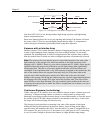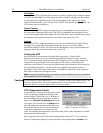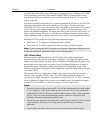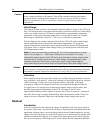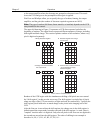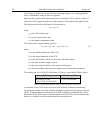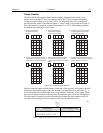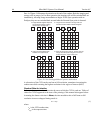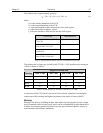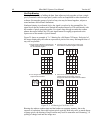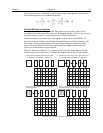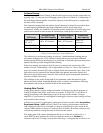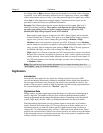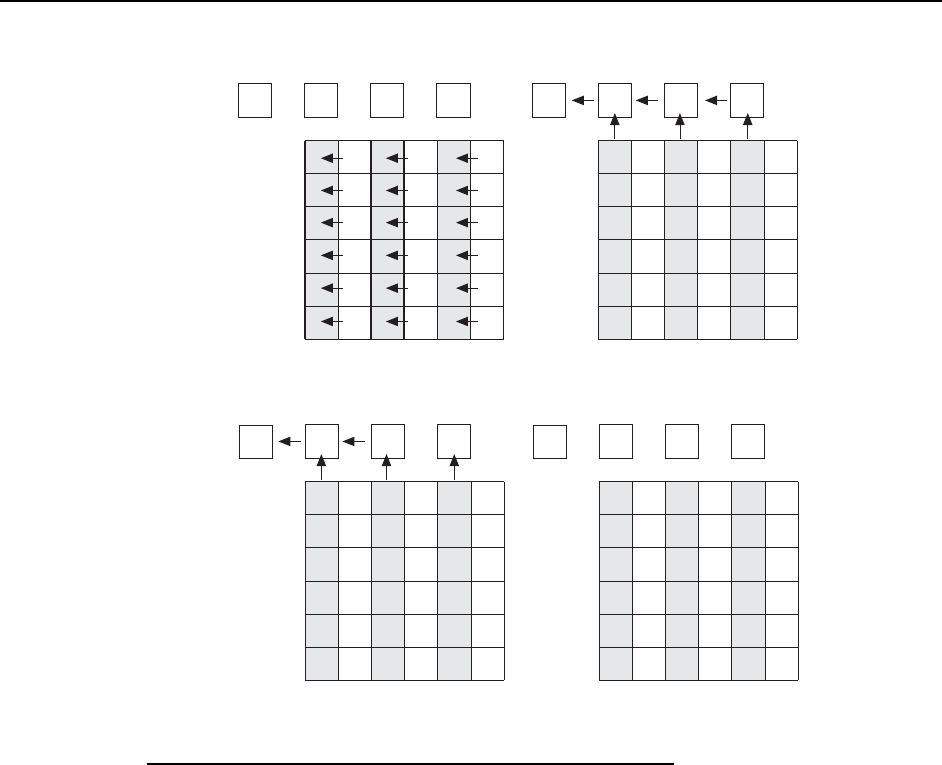
Chapter 5 Operation 65
43
12
Empty Readout Register. Exposure
has ended and image is being
transferred to storage cells.
Image has been shifted to storage cells, first
line has been shifted to Readout Register,
and second exposure begins.
Charge from first cell has been
shifted to the Output Node.
After first image is read out,storage cells are
empty. Second exposure continues.
A2
A1
B2
B1
A4
A3
B4
B3
A6
A5
B6
B5
C2
C1
C4
C3
C6
C5
A1 B1
C1
A2 B2
A4
A3
B4
B3
A6
A5
B6
B5
C2
C4
C3
C6
C5
D2
D1
E2
E1
D4
D3
E4
E3
D6
D5
E6
E5
F2
F1
F4
F3
F
6
F5
A1 B1
C1
A2 B2
A4
A3
B4
B3
A6
A5
B6
B5
C2
C4
C3
C6
C5
D2
D1
E2
E1
D4
D3
E4
E3
D6
D5
E6
E5
F2
F1
F4
F3
F
6
F5
D2
D1
E2
E1
D4
D3
E4
E3
D6
D5
E6
E5
F2
F1
F4
F3
F
6
F5
Figure 23. Overlapped Mode Exposure and Readout
Non-Overlapped Operation Exposure and Readout
Figure 24 illustrates exposure and readout when operating in the non-overlapped m
ode.
Non-overlapped operation occurs automatically any time the exposure time is shorter
than the readout time.
Figure 24 contains four parts, each depicting a later stage in the
exposure-readout cy
cle.
Part 1 of the figure shows the array early in the exposure. The im
aging cells contain charge
proportional to the amount of light integrated on each of them. The storage cells are empty
because no charge has been transferred to them. The arrows between adjacent imaging and
storage cells indicate the direction the charge will be shifted when the transfer occurs.
Part 2 of Figure 24 shows the situation early in the readout cycle. The charge in the imaging
cells has been transferred to the adjacent storag
e cells and up-shifting to the readout register
has started. Note that a second exposure doesn’t begin while the readout is in progress.
Part 3 of Figure 24 shows the transfer to the output node. The lowermost cell in each
colum
n is shown empty. Each row of charges is moved in turn into the readout register,
and from there to the output node and off of the array for further processing. The process
continues until all charges have been completely transferred out of the array. The imaging
cells are electronically switched off and do not accumulate any charge as the readout
takes place. Because this scheme is less time efficient than that used in the overlapped
mode, the frame rate may be lower in non-overlapped operation than it is in overlapped
operation with the some exposure time settings.



